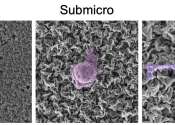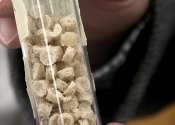A novel universal light-based technique to control valley polarization in bulk materials
Electrons inside solid materials can only take certain values of energy. The allowed energy ranges are called "bands," and the space between them, the forbidden energies, is known as "band gaps." Both of them together constitute ...









